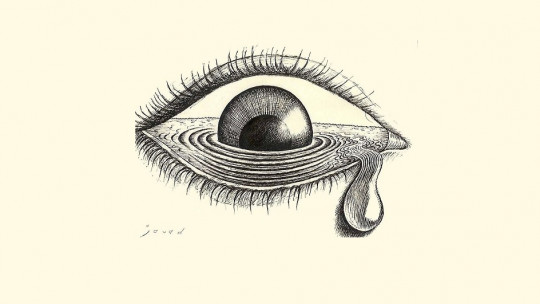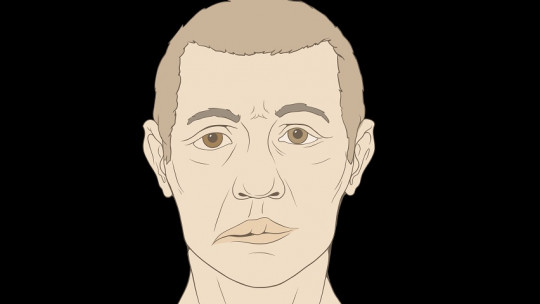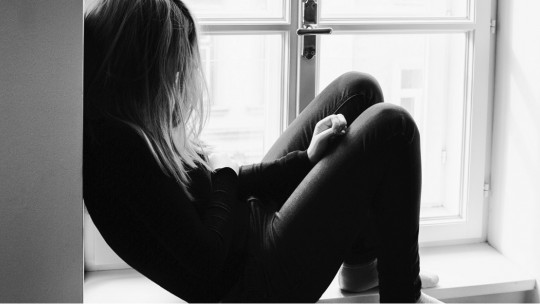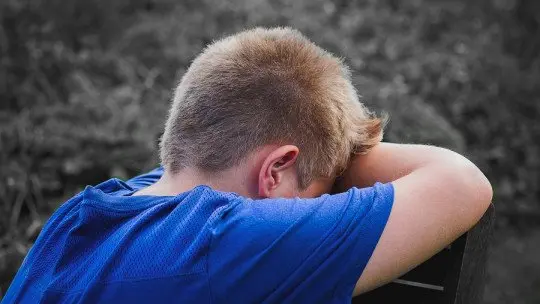Cry. We have all cried at some point, both in childhood and in adulthood. Something happens that causes a certain internal tension to arise, our eyes water, they fill with tears and finally we burst into tears.
And although for many it is something uncomfortable and is often hidden at a social level, the truth is that we are facing an act that is very healthy and useful for our well-being. Now, why do we cry? What can make us want to cry? Why do we sometimes cry for no reason? Let’s see it throughout this article.
Crying and wanting to cry: what happens?
Crying is a complex process, which is based on a physiological mechanism which we have innately, and although it is often considered unique to humans, it is also shared with other animals. However, Crying for emotional reasons is more complex than it seems since throughout our lives we learn to cry as a mechanism to release emotional tension: crying out of sorrow, joy or anger are examples.
Although sometimes tears come out of nowhere, as a general rule when we are faced with crying that arises from emotion, the person has previously noticed a sensation generally described as suffocation or occlusion in the chest or esophagus, as well as difficulties in breathe (there may also be sobbing). That is, it is not uncommon to notice that we feel like crying.
In this process the brain plays a primary role, which begins to take shape at the attentional level. At this time the brain stem, cerebellum and various cranial nerves (III, IV, V and VII) are activated. Subsequently, the ascending reticular formation (which controls brain activation) is greatly activated, something that corresponds to the increase in tension and energy felt just before bursting into tears. After this, the amygdala, hypothalamus, insula, cingulate and prefrontal will be activated, in such a way that the emotion and cognition behind the discomfort is added to this energy.
Crying functions
As annoying and long-suffering as it may be, Crying plays an important role in our psyche, and it’s one that we find beneficial : Different investigations reflect that in a large number of cases, crying leads us to relieve our emotional state, by allowing us to express our emotions and release the energy that represents states of tension and deep sadness. They serve to reduce the increase in the energy level that generates intense emotions such as sadness or anger, so that the body relaxes and returns to a calmer and calmer state.
Tears, when they are emotional, have a composition that also favors emotional release. Specifically, they help eliminate manganese, prolactin and potassium chloride, as well as endorphins and analgesic substances. Substances that can be stressful are therefore expelled, while others that help combat pain and suffering are released.
In addition, it has a function related to socialization: although not always, in general the act of crying provokes empathy on the part of the group, in such a way that whoever cries often receives support and support by being perceived as needy or vulnerable. It also tends to reduce the aggressiveness and hostility of other people, in addition to reducing sexual desire towards them.
Other types of tears, such as basal tears, simply serve to clean and lubricate the eye Something necessary and natural. And in addition, they also clean the eye of irritants and even some bacteria.
Some of the main reasons why we cry
As we already know, for better or worse, there are many reasons that can lead us to feel like crying. Among them we can find both emotional and physical elements.
Below we are going to see some of the reasons, mainly those of psychic origin.
1. Traumatic events and/or stressful life events
One of the main reasons why we feel like crying, and probably the best known of all, is the fact of having suffered some type of traumatic or painful event
The death of a family member or loved one, a breakup, a layoff, bankruptcy or even a minor problem that can also cause us emotional suffering, such as an argument or not achieving a very dear goal or objective.
2. Physical pain
We also often cry when we suffer some type of injury, blow, break, sprain. And physical pain is one of the causes that can make us cry.
However, tears of this type usually follow a different process and even their chemical composition is different.
3. Depression
Another possible cause that can make us feel like crying, even without consciously knowing exactly why, is the existence of a depressive episode (whether in major depression, bipolar disorder or other circumstances).
In this case, a sad mood is maintained and there is a perceived inability to feel pleasure, sleep or eating problems, hopelessness or even desperation. In this state it is not unusual to cry, although it is also possible that despite wanting to cry the subject is not able to do so.
4. Anxiety and stress
Anxiety and stress are other factors that can bring us to the brink of tears. In this case, we find ourselves in a situation where we feel overwhelmed by environmental or social demands.
We believe that we do not have enough resources to cope with what is asked of us or what happens, and we feel anguish. Our energetic and emotional tone rises, and our body may turn to tears to relieve itself.
5. Anger and/or feeling of injustice
Just like anxiety and stress, Anger can also be a reason for the urge to cry
After all, more than one person will have cried with rage. The cause is the same as what we observed in the previous point: we may find ourselves in a situation that we consider unfair and in the face of which we do not see ourselves capable of doing anything.
6. Empathy
In addition to the above, it is necessary to highlight that another reason why we may feel like crying is identifying suffering and pain in other people We may feel like crying when we see another person crying or having a bad time. This is influenced by the so-called mirror neurons, which allow us to capture the emotional reactions of others and even reproduce them.
This situation does not only occur when observing another person suffering, but it can also appear when viewing situations that we would consider sad if we lived through them, or when we see them in movies or novels.
7. Capturing beauty
Although it may not be as common as the previous ones, Some people can cry with emotion when seeing certain works of art, whether novels, paintings, sculptures, buildings or movies
In this case, the reason for tears is the emotion derived from capturing something that we consider beautiful, although it does not generate sadness per se. This is what happens to people who suffer from Stendhal syndrome.
Why do we cry for joy?
So far we have talked about why the urge to cry may appear and we have seen that we mostly do it as an emotional release or in response to some aversive or painful event.
However, as many have probably already wondered, Sometimes we also feel like crying when positive things happen: sometimes we cry with joy Why it happens?
Finding the answer to this question is more complicated than it seems but, according to some research, the reason could be that the body itself tries to self-regulate after being activated by joy or other positive emotions: it tries to return to a base state through a reaction that reduces the surge of energy that the emotion causes. It is therefore, just as it happens when we cry out of rage, of a way to regain balance on an emotional and energetic level
I feel like crying… but I can’t
It is possible that some people feel like they really want to cry or even want to do so but are unable to do so. There are many possible causes for this, which can range from brain injuries and diseases of different types (for example, some autoimmune diseases) to a much more common one: the existence of an emotional block.
First of all, we must keep in mind that there is no rush: each person processes things at their own pace, and the fact that tears do not come when they theoretically should must be respected.
The emotional block
On the other hand, if the inability to cry is absolute and lasts over time, it is possible that the causes lie in an emotional blockage. Emotional blocks occur when faced with events or situations that generate great anxiety and suffering, and which appear unconsciously as a defense mechanism to protect oneself from said pain.
However, this blockage prevents or makes it difficult to work and process what happened. These blocks can occur normatively, but also in processes such as depression or post-traumatic stress disorders.
What is advisable in these cases is to first give yourself some time (some situations need time to begin to be accepted as real, as happens in cases of grief), and later, if the person wants to, try to work little by little on aspects related to the cause of said blockage. If necessary, first tangentially, gradually approaching the event itself and trying to relive and reprocess the situation so that we can process it.
The weight of culture
Likewise, and especially in the case of men, Crying has traditionally been seen as a sign of weakness, something shameful This makes it difficult to express crying in public. But we must keep in mind that crying in public implies recognizing the existence of a moment of vulnerability, something that on the other hand can also imply a certain courage.









